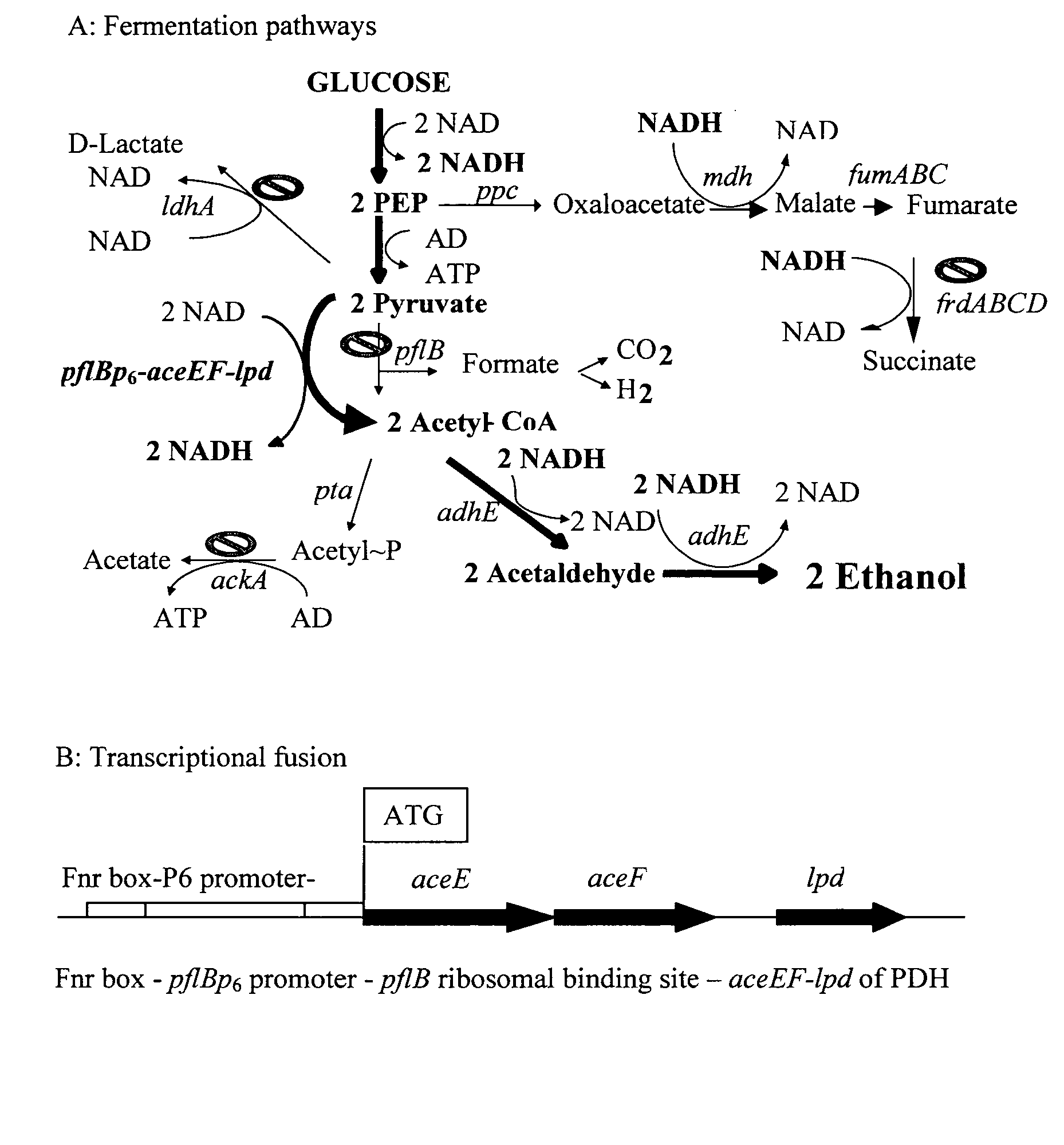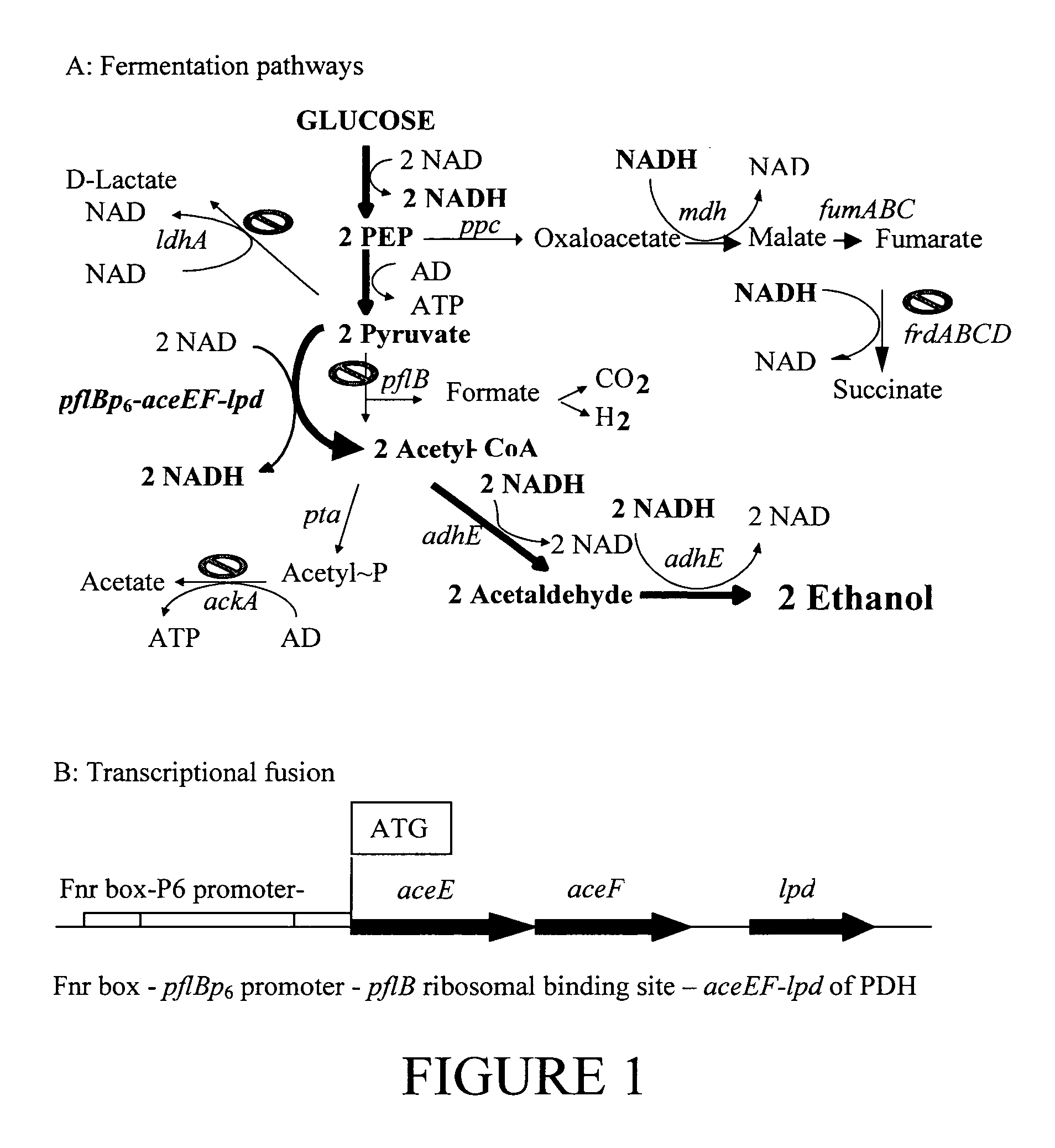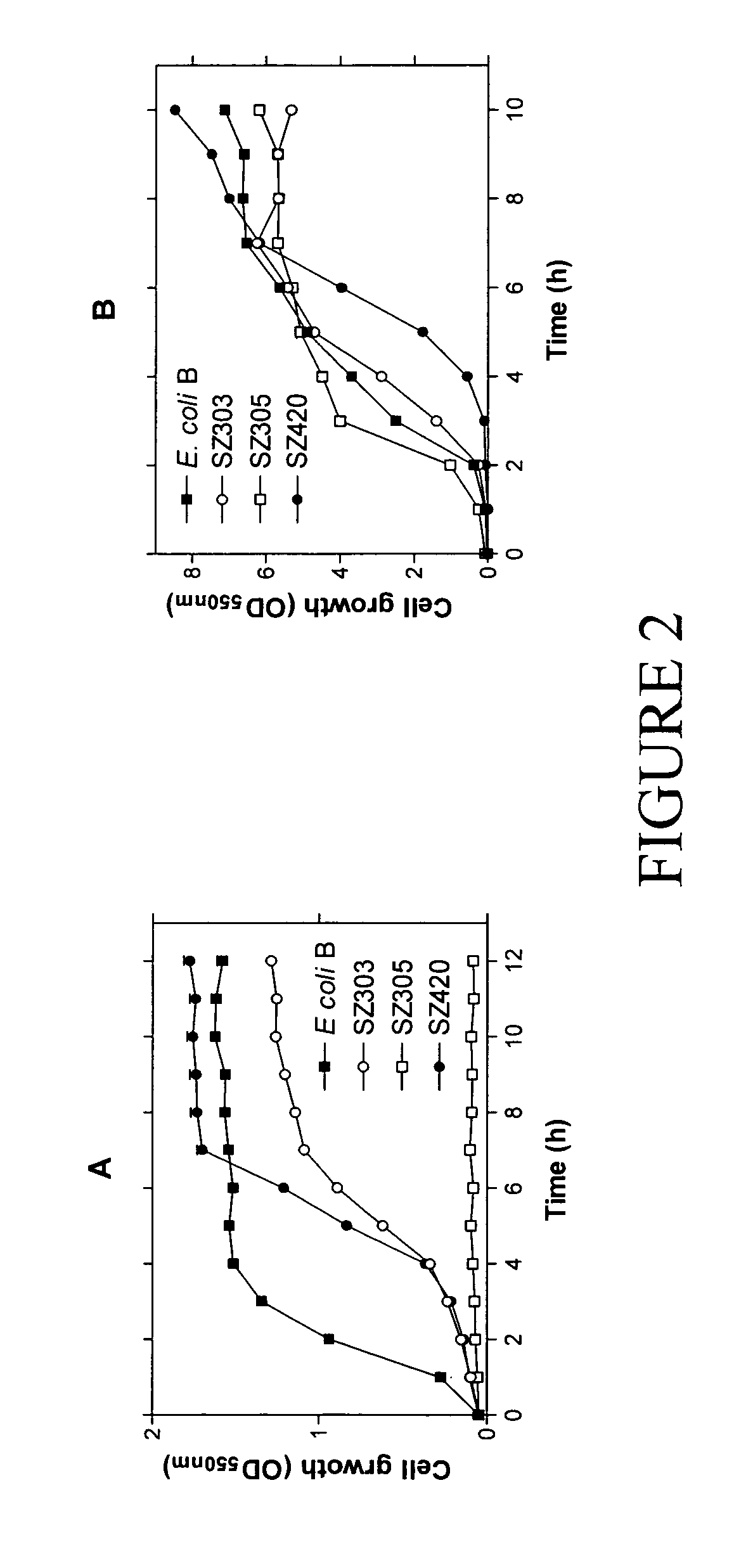Native homoethanol Pathway for ethanol production in E. coli
a technology of ethanol and e. coli, which is applied in the direction of biofuels, organic chemistry, enzymes, etc., can solve the problems of limited growth potential as a primary transportation fuel, adversely affecting the availability of feedstocks for food and feed industries, and currently underutilized, so as to improve cell growth and improve ethanol production
- Summary
- Abstract
- Description
- Claims
- Application Information
AI Technical Summary
Benefits of technology
Problems solved by technology
Method used
Image
Examples
examples
Materials and Methods
Bacterial Strains and Plasmids.
[0034]Bacterial strains and plasmids used in this study are listed in Table 1. E. coli DH5a was used for plasmid construction. E. coli B (ATCC 11303) was used as the wild type parent for engineering of the homoethanol strain. During plasmid and strain construction, cultures were grown in Luria-Bertani (LB) broth (g / L: tryptone 10, yeast extract 5, and NaCl 5) or on LB plates (agar 15 g / L) (24). Antibiotics were included as needed at the following concentrations: kanamycin, 25 or 50 μg / ml; ampicillin, 50 μg / ml. The homoethanol producing strain was maintained on NBS agar plates (36) containing 2% glucose or 2% xylose.
Chromosomal Gene Deletions.
[0035]Standard methods were used for plasmid construction, transformation, electroporation, PCR, and DNA sequencing (17, 24). The PCR primers used for strain construction are listed in Table 1. Chromosomal gene deletions were constructed using procedures developed by Pospai (20), and Datsenko (...
PUM
| Property | Measurement | Unit |
|---|---|---|
| Strain point | aaaaa | aaaaa |
Abstract
Description
Claims
Application Information
 Login to View More
Login to View More - R&D
- Intellectual Property
- Life Sciences
- Materials
- Tech Scout
- Unparalleled Data Quality
- Higher Quality Content
- 60% Fewer Hallucinations
Browse by: Latest US Patents, China's latest patents, Technical Efficacy Thesaurus, Application Domain, Technology Topic, Popular Technical Reports.
© 2025 PatSnap. All rights reserved.Legal|Privacy policy|Modern Slavery Act Transparency Statement|Sitemap|About US| Contact US: help@patsnap.com



